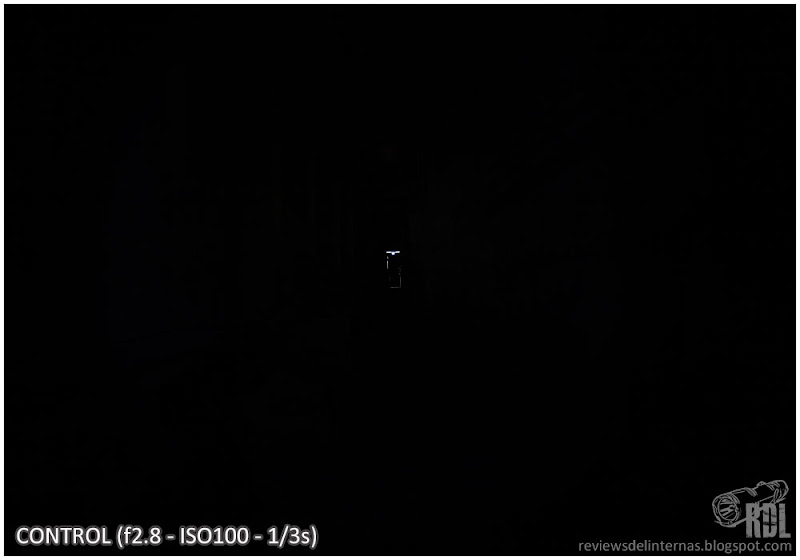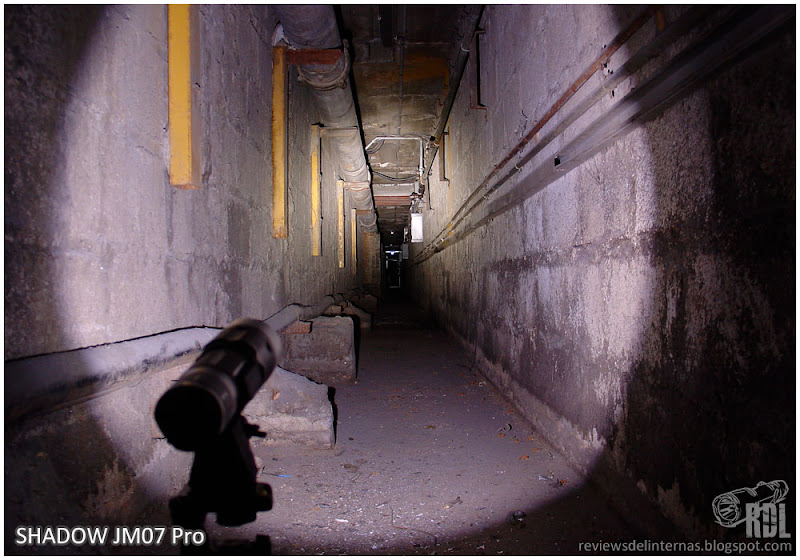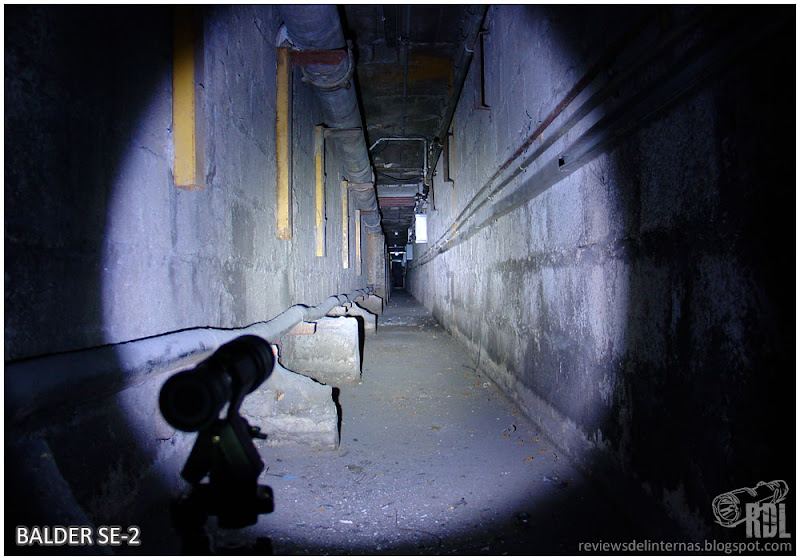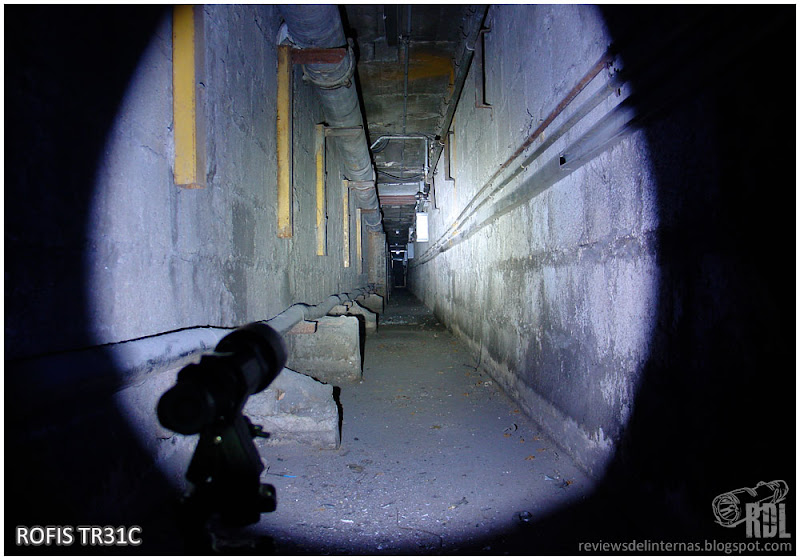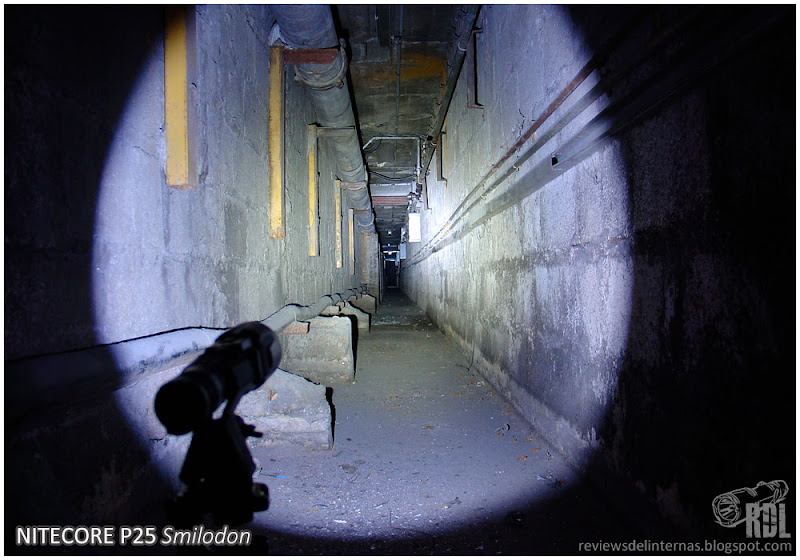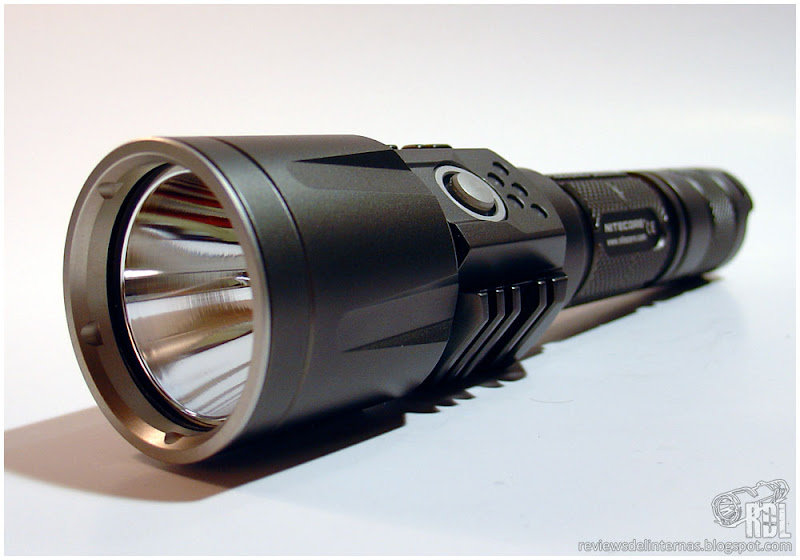
P25 NITECORE Smilodon
LED: Cree XM-L U2
Battery: 1x 18650 / 2x CR123 / 2x RCR123
Modes: 8 (Turbo-High-Medium-Low-Micro-Strobe-SOS -Beacon) with memory.
Switch: Double, head electronic switch and the tailcap forward.
Price: TBA
Date: January 2013
Links:
Nitecore / Thread in ForoLinternas / RdL
PRESENTATION:
Nitecore surprised everyone with this just released new flashlight, a tactical, named P25 Smilodon.
Smilodon is the name of an extinct feline, also known as Sabretooth. Nitecore wanted to nickname her brand new tactical flashlight with the name of this terrifying creature, extinct for over 10,000 years.
Nitecore would initially provide some test units to a closed group of reviewers, which we had to keep secret the project to publish the analysis on the day of launch announcement of the flashlight, but unfortunately my unit arrived late for reasons beyond and the Nitecore announcement finally rushed, so this review comes slightly late.
This new flashlight will be the first of the new “Precise” range, dedicated to providing products for tactical, military and policial usage.

As usual this review sample comes naked, without any original packaging, accessories or spare parts, but thanks to the instruction manual of the flashlight I can point out that the package also contains a holster, landyard, titanium-plated clip , tactical ring, USB cable and o-rings and spare switch cover.
Besides this P25 will be sold in two colors, the “Black Law Enforcement” and “Military Grey”

FINISHING EXTERIOR:
The exterior of the P25 is really distinctive, with several details that give it a unique and genuine character.
I’ll start with the color, “Military Grey” in this case, it’s a nice HA III anodized with a matte gray reminiscent of “NATURAL HA”.
General lines of the P25 are quite similar to the Nitecore MH25 , with dimensions quite similar.
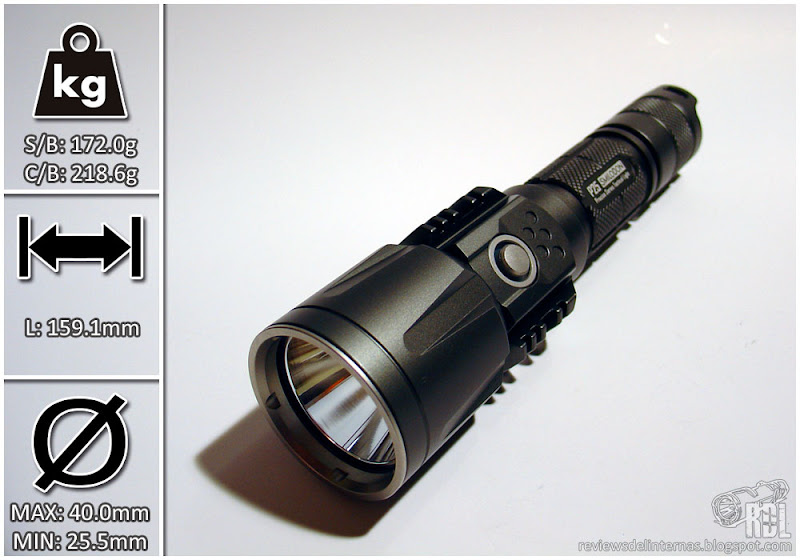
The flashlight head has a flat bezel, stainless steel, ultra clear lens with anti-reflective treatment and a smooth reflector considerable depth. The XM-L U2 is perfectly focused thanks to a black centering mechanism.

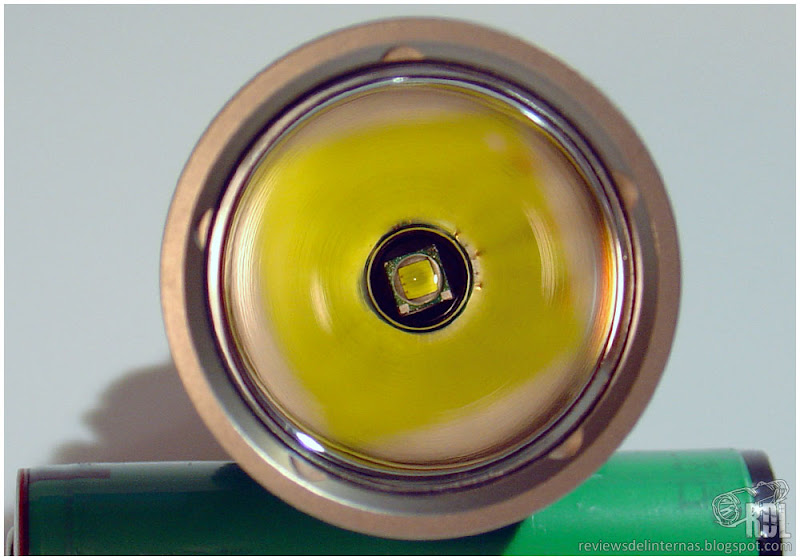
Outwardly, the head has several longitudinal grooves that prevent the flashlight from rolling on smooth surfaces. In the neck of the head, we have some of the most distinctive features of the P25: On both sides, we have two picatinny rails, as those found in assault rifles for attaching accessories to the weapon. These rails also provide an anchor point fast, and act as cooling fins.
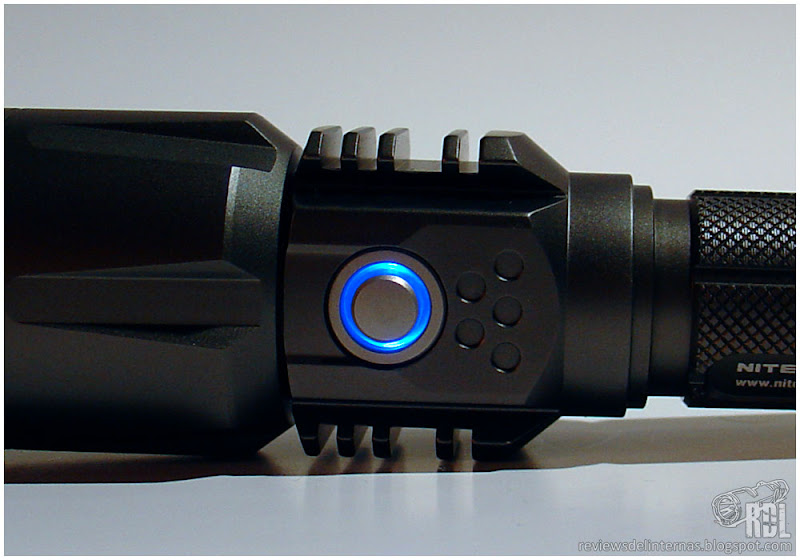

These rails have, on one side, the button “two-stage” with backlit, and the opposite has the charge USB port, protected by a silicone gasket.
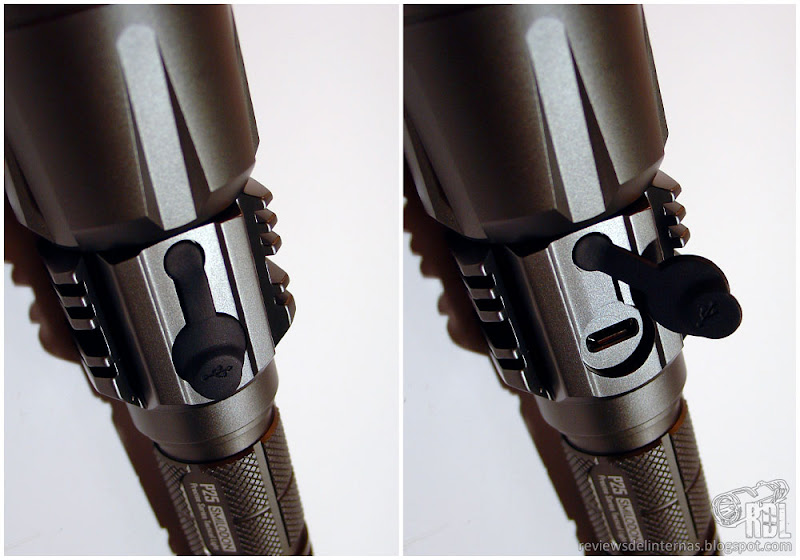
Inside, we have another novelty: The connection between the circuit and the positive pole of the battery is provided with a spring system with mechanical protection against the installation of batteries with reversed polarity. This double spring system seems optimal to withstand the recoil when we have the flashlight mounted in a weapon.
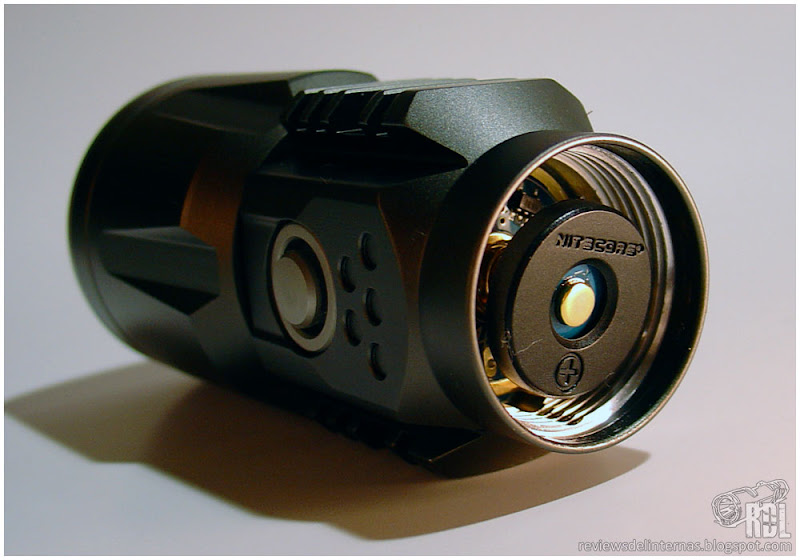
The tube is externally coated by a knurled central zone, and two tracks for the installation of the clip, which may be placed in both directions. The threads are perfectly machined raw aluminum being at its junction with the head and anodized tail plug, allowing the lock-out of the torch simply by loosening it. The laser engravings are all very crisp and clear, even in small letters.
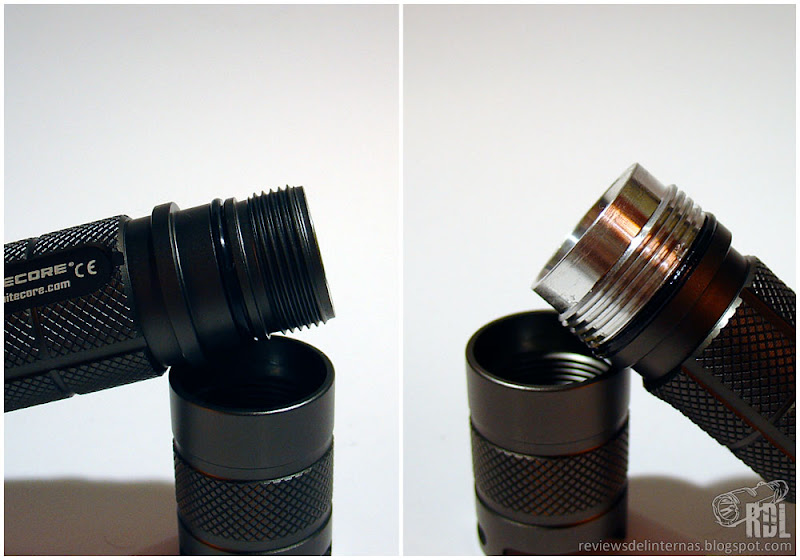
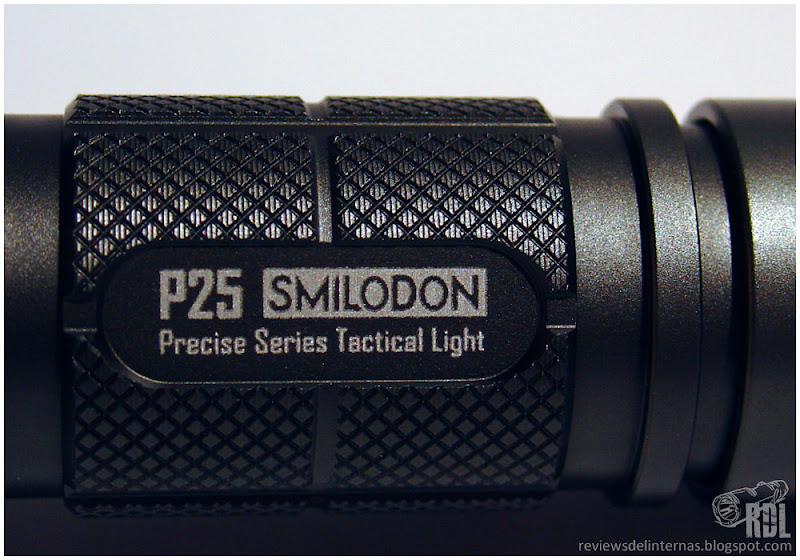
Finally, the design of the tailcap is made to allow quick access to the switch forward, which has a black silicone coating with the letter N in its plane and clearly stands out from its base. On both sides, we have two raised crenelations with perforations for attaching a wrist strap, which also allow the flashlight in place without hindering tailstand momentary push access.

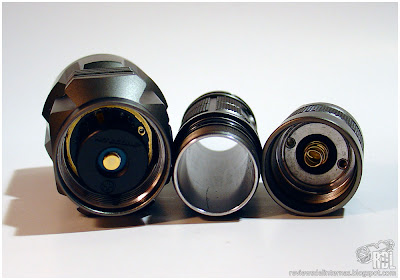
Inside, we can see how the set is removable, thanks to a bi-pin threaded washer.
OPERATION / UI:
The Nitecore P25 uses a double switch, with a tactical switch located in the tailcap, combined with an electronic switch, similar to the already seen in other models of the brand, in the head. The tailcap switch is responsible for switching on and off of the lantern, and has the ability to offer momentary switch function.
Head switch, similar to a camera shutter, can difference between a pulse or a complete press . Also this second button functions as battery status indicator, battery voltage indicator, charging status indicator and locator, thanks to its backlighting.
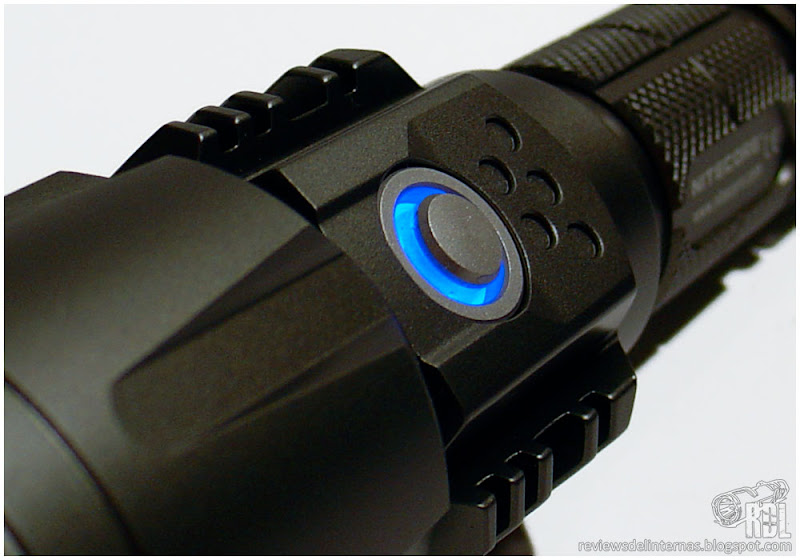
The sequence of modes consists of 5 main modes in the following order:
Micro-> Low-> Medium -> High-> Turbo
This group has memory, and always turn in the last mode, either from in tailcap switch button and from the head.
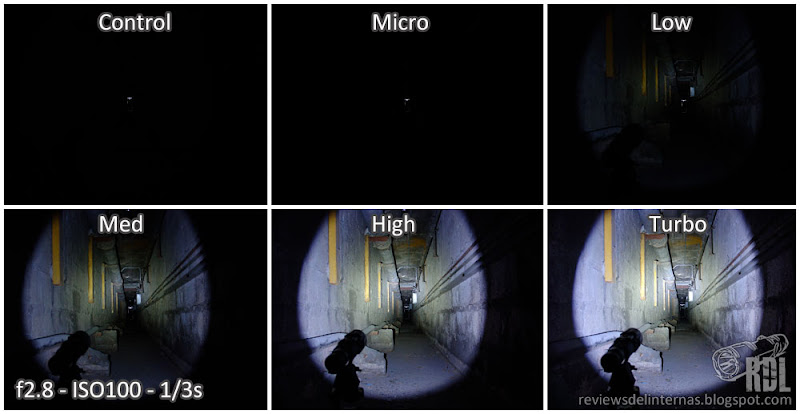
An interesting feature, not mentioned in the manual that I’ve discovered by accident is that we have a shortcut access to Turbo with a partial press maintained from any of those intensites.
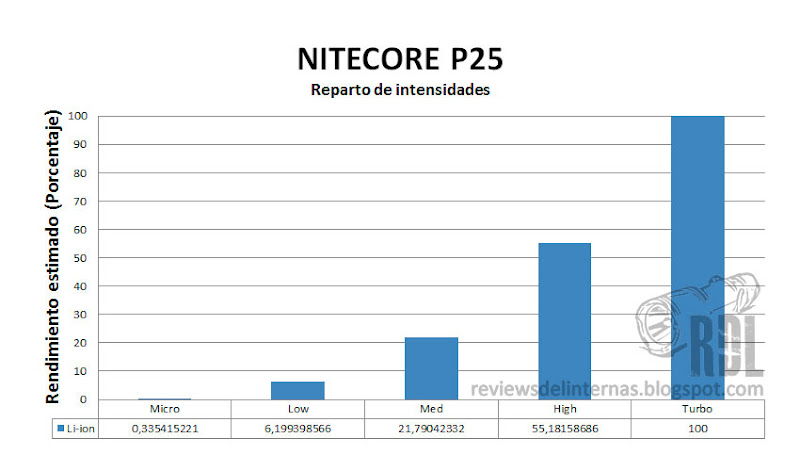
The P25 also has Strobe, SOS, and Beacon hidden modes. These special modes are also accessible via the head switch, holding it down completely for more than a second.
The first to appear is the Strobe, and pressing lightly will alternate with the SOS and beacon mode. To return to the main sequence of modes, just full press the head switch again, or directly off from the tailcap switch. This secondary group modes “special” has no memory, and always starts on the Strobe.
Keeping the head switch pressed with the flashlight in Standby gives us quick access/shortcut to strobe (starts for a moment on memorized intensity mode and then quickly jump into strobe).
The flashlight also has a standby function, which is apparently off, but kept in memory mode selection and allows us to use the flashlight forgetting about the tailcap switch .
To access the standby function, we have to push the head switch to the bottom with the flashlight on.
While the lantern is in Standby, backlit button flashes every three seconds, helping you locate the flashlight in the dark.
To exit this function, just press the button all the way down, or turn off the from flashlight tailcap switch.
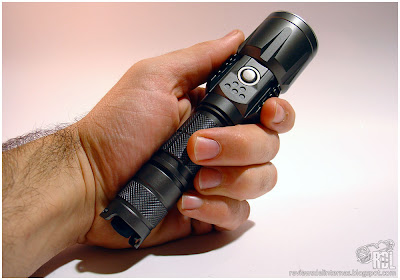
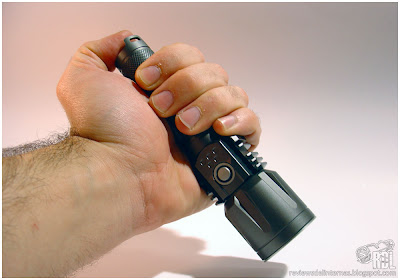
Another interesting feature is that the P25 has the ability to charge a 18650, through the integrated USB port on the opposite side of the head to the button.
Though the flashlight can be used with one or two RCR123/16340 or one 18650, the load is only possible for 18650. As in other flashlights capable of charging batteries, tailcap switch must be on for the work load.
During charging, the light that surrounds the head button flashes twice per second. If the system detects a problem, the indicator flashes quickly. This is usually due to improper installation of the battery or the tailcap switch not being activated.
Charging time will vary depending on the battery capacity, in my case approximately 7 hours to full charge a PCB tripped Panasonic NCR18650A 3100mAh, so I conclude that the charge current will be about 500mA. There’s no improvement on charging time, whatever charging system we use, as current is controled by the flashlight and not the adaptor plug.
Once fully charged battery, the switch light stays on and steady.
Due to use a USB port on the flashlight, we can use a charger, for example, a Smartphone to load into any outlet, without using the supplied USB cable.

Finally, this Nitecore P25 also has a sophisticated warning system remaining battery capacity:
With the flashlight on, the backlight of the button will blink once every two seconds while we have about 50% of the battery capacity. When the charge level approaches empty, the indicator flashes faster.
In addition, into the Standby function, with a slight touch on the head button indicator will show the battery voltage by a sequence of flashes, as seen for example in the Explorer range. Four flashes, pause for a second, and two new flashes tell us that the battery voltage is 4.2V. We can also know the voltage while charging using the same procedure.
This comprehensive user interface has a price: A parasitic consumption produced by the Standby function of about 0.8mA, but we can completely neutralize the flashlight from the rear switch or slightly unscrewing the tailcap threads.
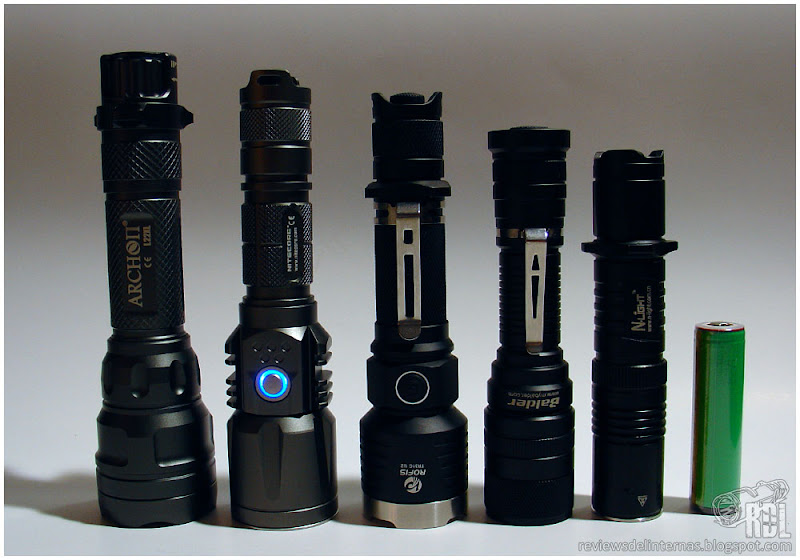
The Nitecore P25 is a tactical light, but thanks to its user interface it is still civilian friendly.
With the switch forward, we control the only function of a tactical flashlight, momentary on.
To change modes, we have the head switch.
Locator ONLY works when the flashlight is on Standby, so it do not betray our position with the flashlight off from the tailcap switch.
Indicator level blinks ONLY works with the flashlight on, so it do not betray our position as this will only shows when the flashlight is on, and the light of the XM-L will call more attention than the flashing warning.
We have “shortcuts” to Turbo and Strobe, something very interesting for tactical use.
Then have the Standby function, in which we no longer consider the P25 as an instrument of combat, and becomes a civil flashlight more than complete.
In this role, we fully control the flashlight with head switch.
flicker is where the locator and the voltage indicator function.
Although a priori may seem complicated, the truth is that the user interface is really intuitive. Nitecore has done a great job combining the classic tactical switch, with its patented “two stage” switch, providing users multiple combinations for different environments.
CURRENTS & BATTERY LIFE:
Panasonic NCR18650A 3100mAh@4.2V:
- Turbo: 2600mA
- High: 1480mA
- Medium: 350mA
- Low: 100mA
- Micro: 6mA
P25 regulation is quite good. Nitecore declares a time-controlled stepdown in Turbo mode after 20 minutes of continuous use, to protect the light from overheating. The truth is that, after a few minutes, the intensity begins to fall slightly, stabilizing after approximately seven minutes, where will hold for 13 minutes until does the real stepdown.
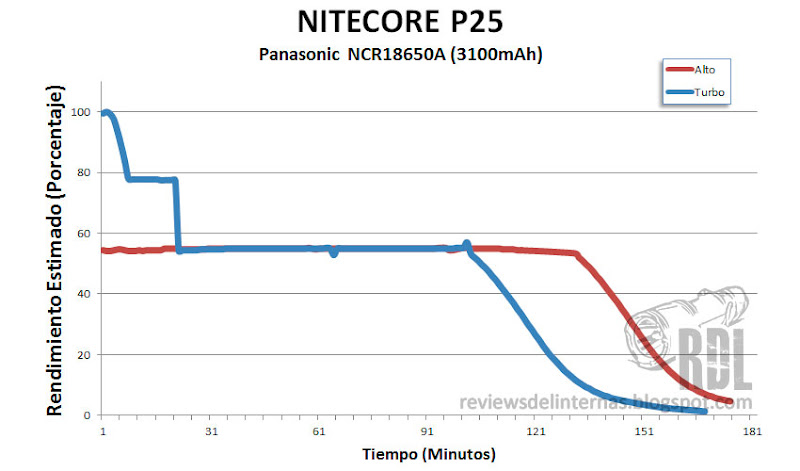
In High mode, there’s no stepdown and maintains the brightness regulation for approximately 140 minutes where the voltage is insufficient to sustain it.
All modes are achieved through regulated current, so no PWM.
BEAM PROFILE:
The beam profile is markedly P25 pitcher. Although unable to reach other flashlights with larger reflectors, we can see that the hotspot is clearly defined and has a relatively small size within the set of projection.
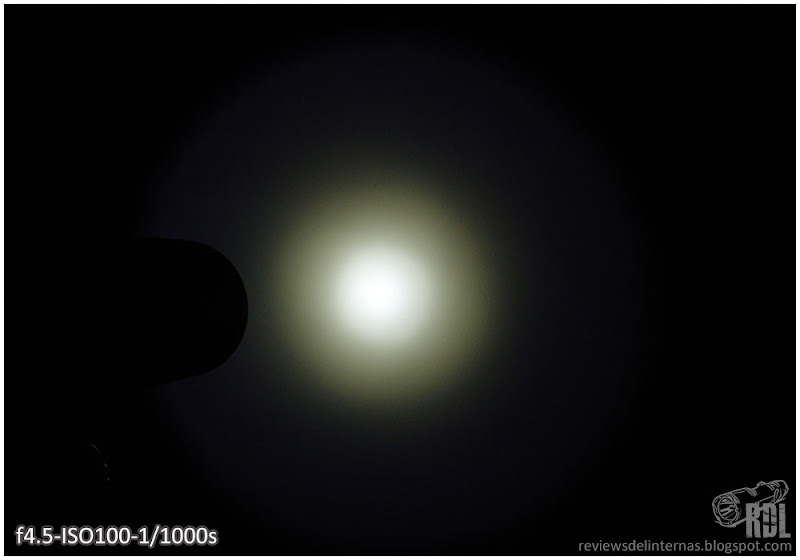
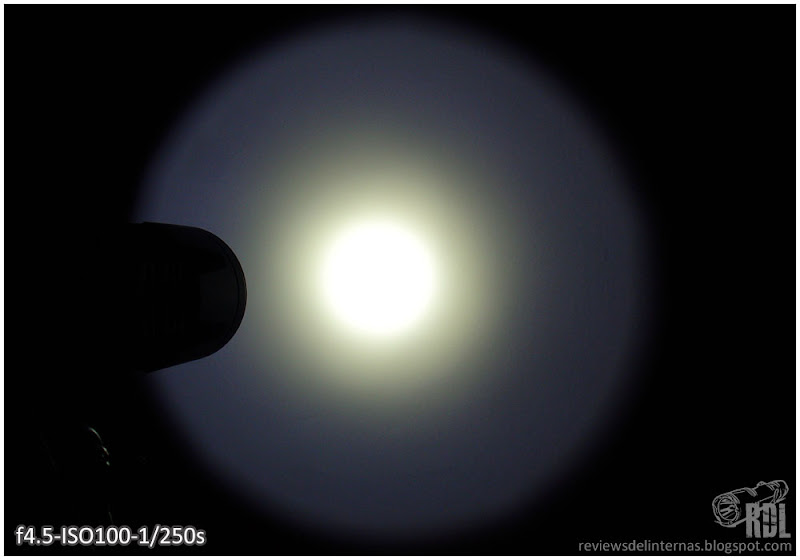
The smooth reflector ” PDOT “avoids any ring on the projection, creating peripheral illumination also pretty good for this type of concept.
Tint of XM-L U2 is cold, but there are no shades of green as in other XM-L of the same bin. However if you can observe a tendency to bluish especially in low and micro modes, but only on bright white surfaces.
PERSONAL CONCLUSION:
A tactical flashlight, with advanced features but inherited part of the user interface of other lanterns mark using the same button, making it versatile and practical for almost all situations. We use only with the button through the standby function, or otherwise as any other tactical light combining the head switch and momentary tailcap switch.
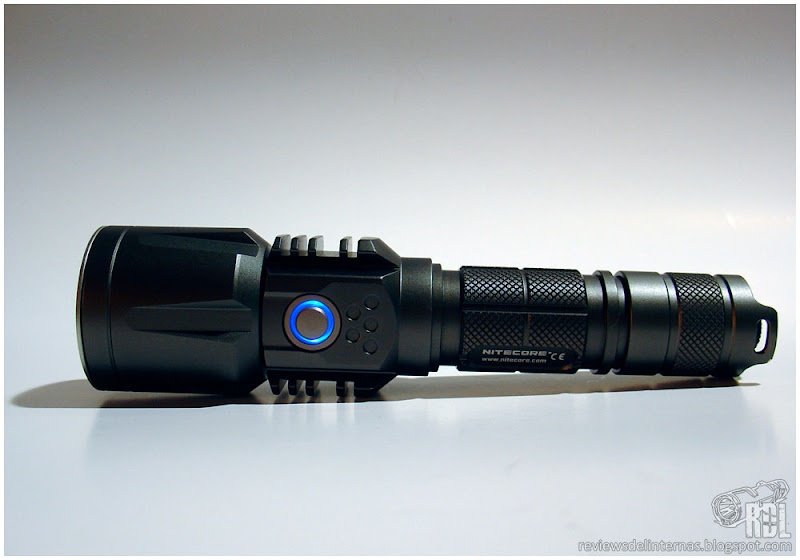
Its aggressive aesthetics and striking shapes also add a great grip.
The USB charging function may seem unnecessary in such a single battery flashlights, but can be extremely useful because not using a “propietary” cable, so you can use any other supply system such as a Smartphone charger. Unfortunately this feature significantly lengthens the flashlight.
This Nitecore P25 certainly has the most comprehensive interface I’ve seen so far in any flashlight.
The only interface detail I noticed that I think can be improved, is the voltage warning in Turbo mode. Probably as a consequence of the huge current, the battery indicator starts signaling 50% with a flickering illumination blink every two seconds, just a few minutes of use even with the battery to 100%. I guess this is because the voltage drop when subjected to such discharge.
![]() I like:
I like:
- User Interface.
- Appearance.
- Advanced Features.
- Nitecore Quality
![]() I do not like:
I do not like:
- Its length.

